Table of Contents
- Backlinks and referring domains still strongly correlate with top SERP rankings, per Ahrefs and Backlinko 2025 studies.
- Digital PR now outperforms traditional link tactics, earning authoritative links and unlinked mentions from trusted publications.
- Top 10 Google rankings heavily influence AI Overview citations—over 90% include at least one top-ranking page.
- Unlinked brand mentions outperform backlink quantity for AI visibility, suggesting a shift toward brand authority signals.
- AI Overviews are volatile, with low click-through rates—visibility matters more than referral traffic in AI results.
- Link building isn’t dead—it’s evolving; brands must pivot to authority-building via digital PR and brand-focused strategies.
Every few months, the SEO world declares link building dead.
You’ve heard it all before:
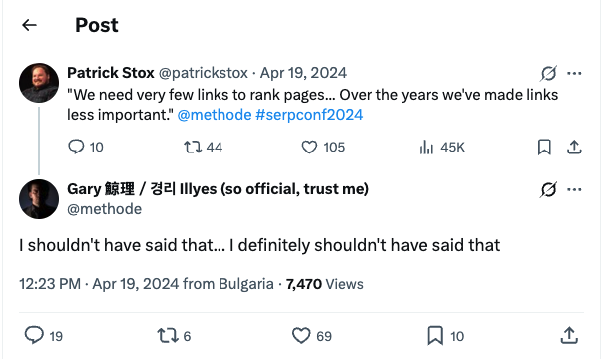
And yet, according to Google Trends, interest in link building is at an all-time high and is currently skyrocketing.
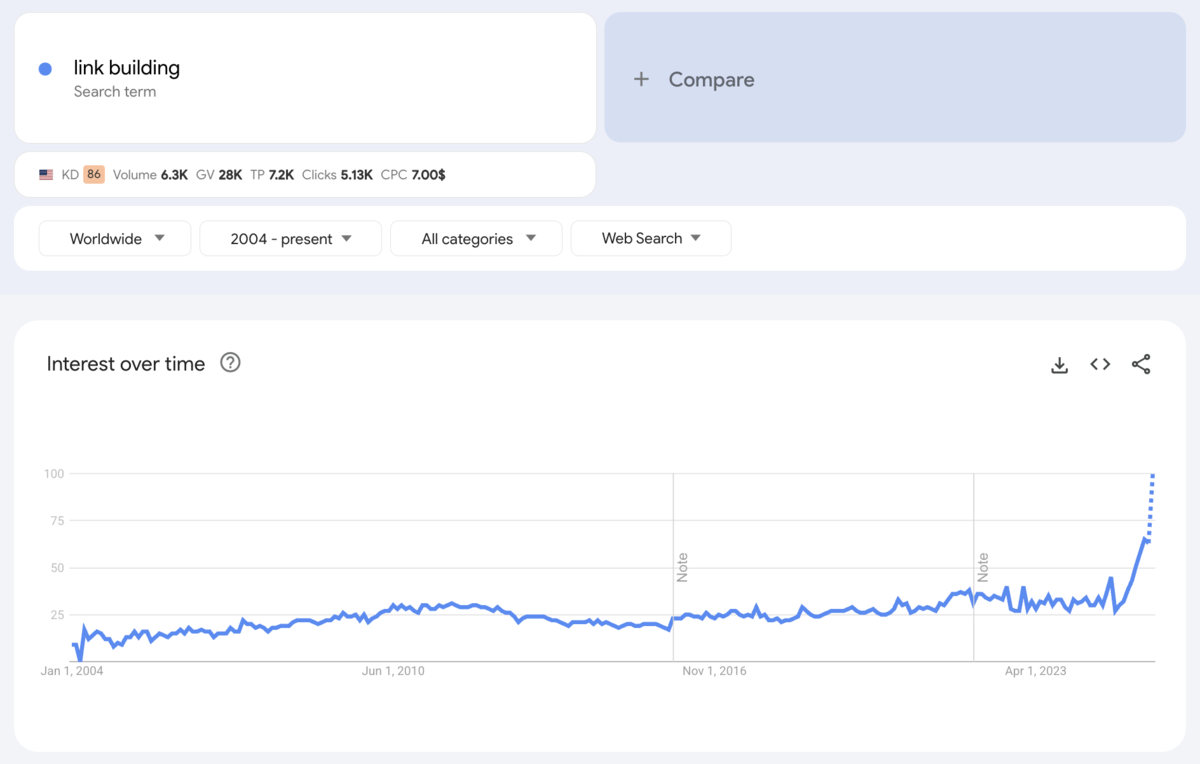
Our own Link Building Trends report found that 56% of SEOs plan to increase their link building budgets in 2025.
Both can’t be true…can they?
In this post, I aim to dispel some misconceptions, shed light on studies you may not have encountered, and help you understand whether links matter and answer once and for all if link building is dead (it’s not).
Links Still Correlate with Better Rankings
Let’s start with the most direct studies.
Ahrefs concluded in their January 2025 analysis of 1,000,000 keywords that, in general, the number of backlinks and referring domains positively correlated with ranking in the top 20 SERP results.
Overall, it looked like this:
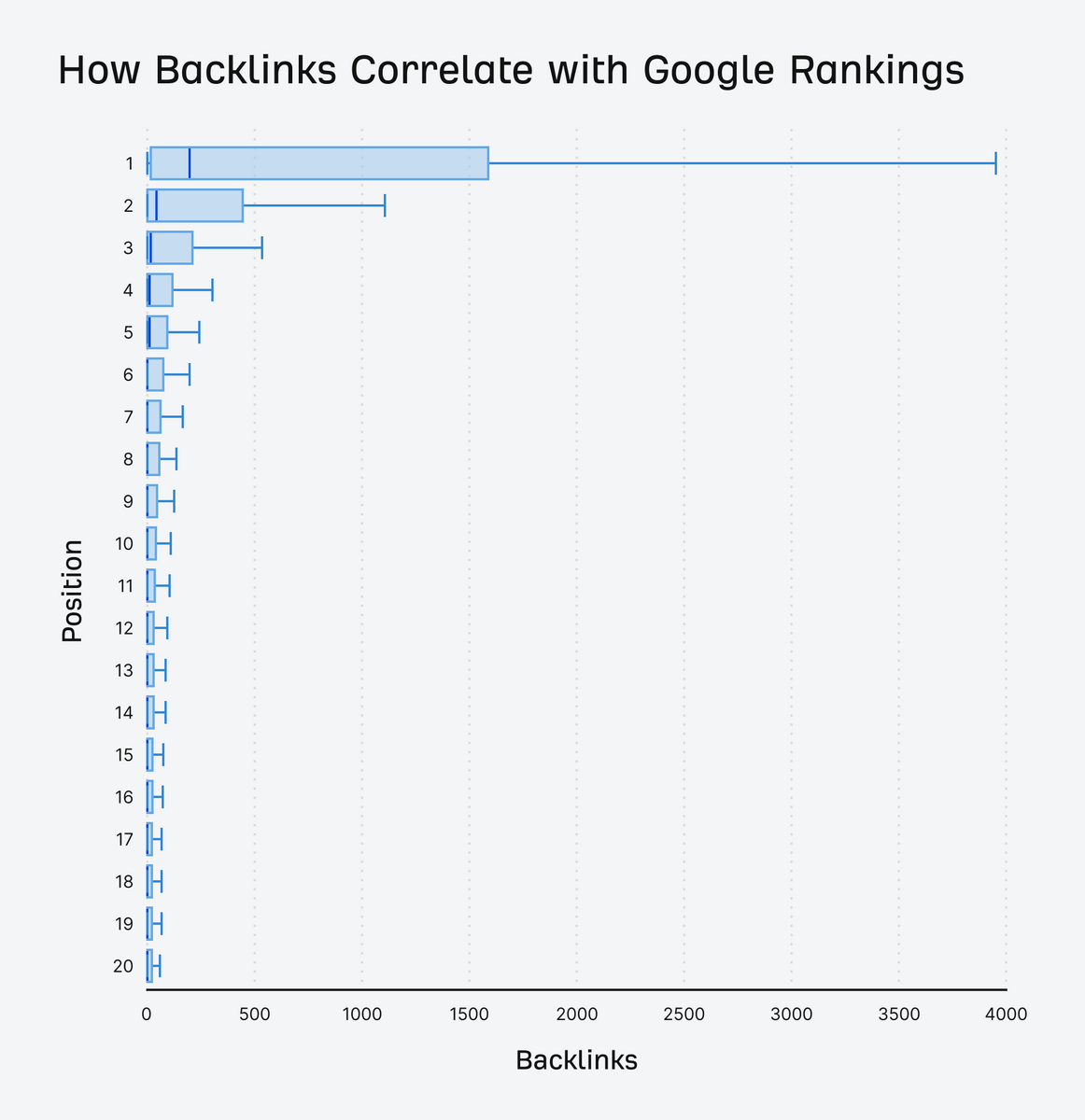
Breaking down the factors, you can see that it’s both the number of referring domains and backlinks that positively correlate with rankings:
- Number of refdomains: 0.255
- Number of followed refdomains: 0.250
- Number of backlinks: 0.248
- Number of followed backlinks: 0.242
But that’s not all.
Another study, conducted by Backlinko in April 2025, which analyzed 11.8 Million search results, found similar results.
In general, the top-ranking pages have more backlinks than lower-ranking pages:
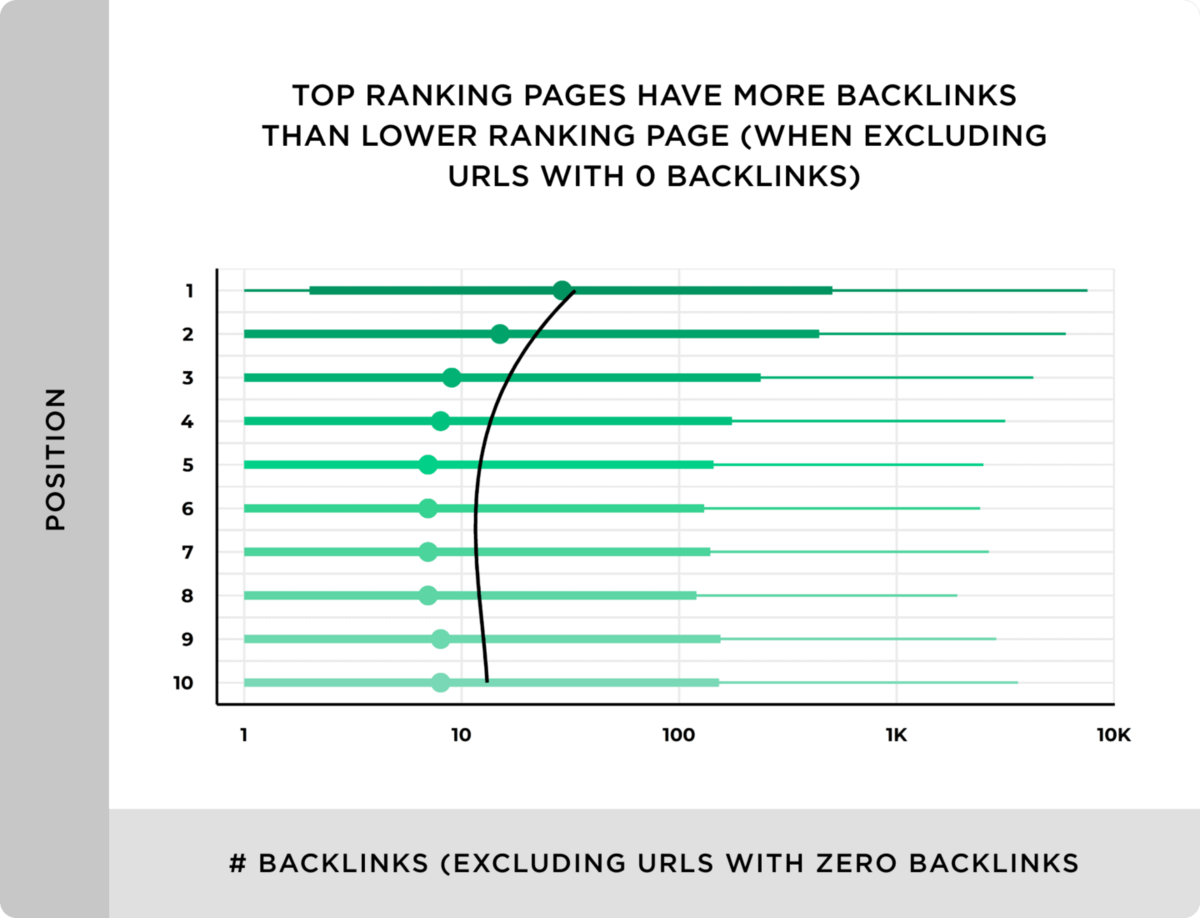
The top ranking Google result has almost 4 times as many backlinks as 2-10:
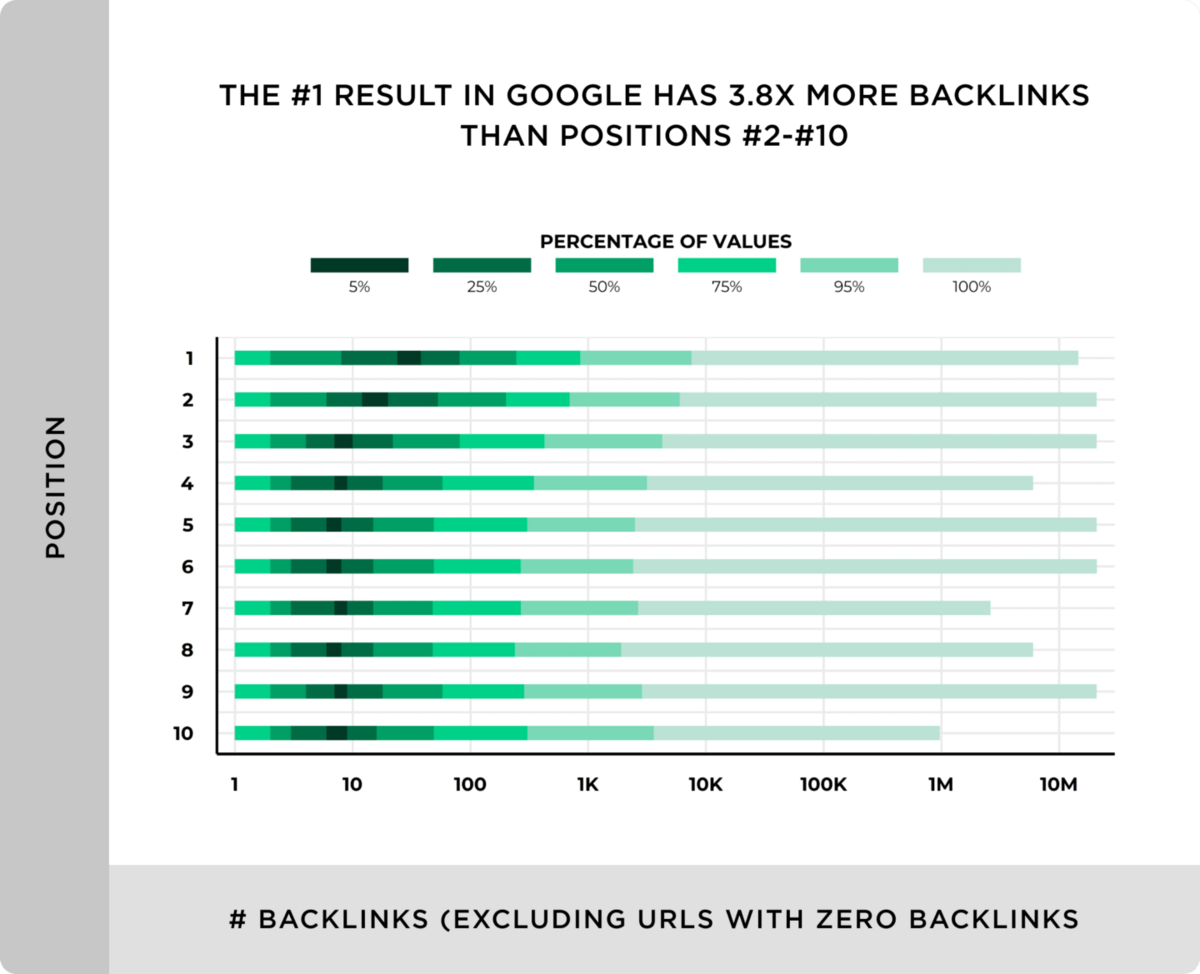
However, causation can be messy.
Are the pages ranking because they have links getting links or because they rank?
It’s a chicken-and-the-egg situation.
So, let’s step back from pure link numbers and start looking at what these links are made to impact, which is more organic traffic, better rankings, and higher site authority.
Traditional Link Building is (Mostly) Dead
We used to be able to brute-force build links to achieve rankings. But that is no more.
I’ve outlined my thoughts on that in this post on link building in 2025, so I won’t get too far into it here.
Basically, Helpful Content Update in March 2024 and subsequent Link Spam Update in June dealt a significant blow to most sites that existed solely to buy and sell links.
In a recent study I conducted on guest post costs, I examined the quality of guest posts and link insertion sites on link vendor sites and found that only about 4.6% were of high quality.
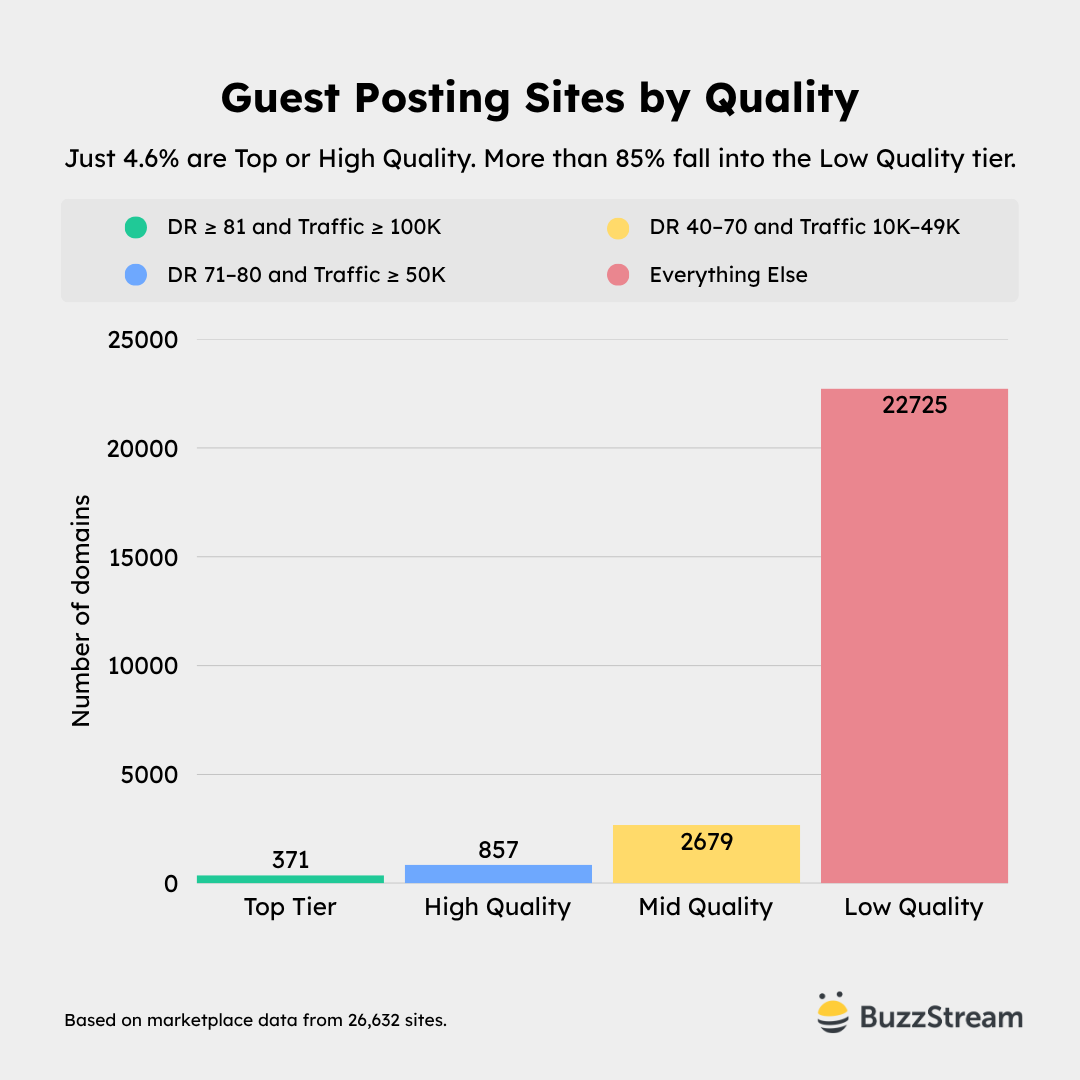
Many other traditional tactics, such as resource page outreach, broken link building, and link insertions, once offered numerous opportunities and had a significant impact.
However, agencies and consultants still employ these tactics; for the most part, they are now used as opportunistic or supportive tactics, rather than as entire service offerings.
This decline in traditional tactics is precisely why digital PR has emerged as one of the most effective strategies.
Instead of chasing low-quality placemats and manufactured opportunities, brands are earning coverage on trusted sites.
But again, if all of this is true, why is link building trending?
Because, as you’ll see, links still have a significant impact on rankings and traffic.
Link Building Matters for How It Impacts Organic Traffic and Rankings (Backed by Empirical Research)
Understanding why we build links helps us comprehend the impact of link building and better answer our target question: whether link building is dead.
If you’re just building links to build links, you are missing the bigger picture.
To understand why SEOs build links, let’s examine our Link Building Trends study, which reveals that the most essential reason organizations invest in link building is to improve search rankings and increase organic traffic (68%).
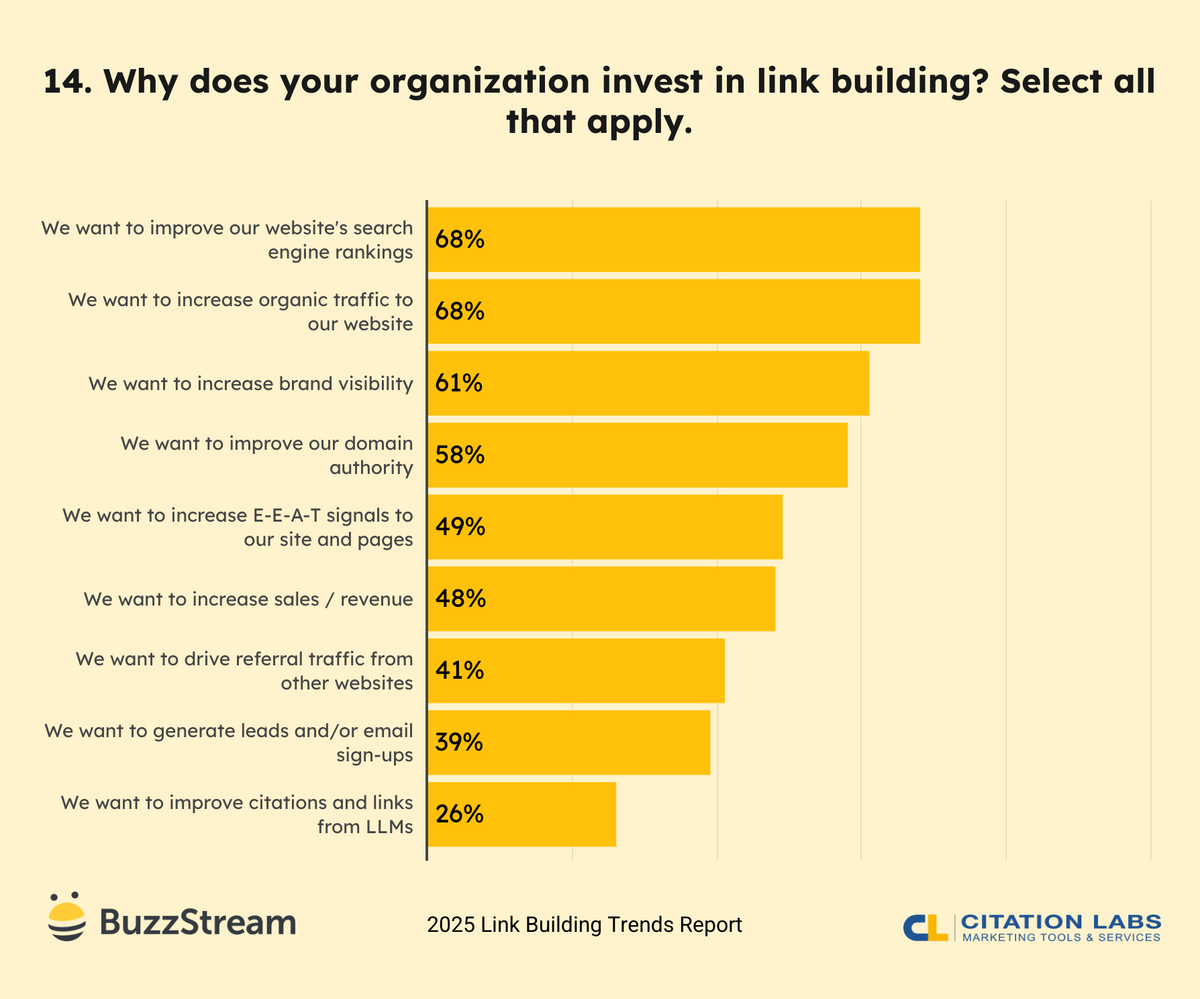
So here are some studies I’ve found that help support the notion that link building helps enable:
- Higher organic traffic
- Better rankings
- Stronger authority
1. SEMRush – 2025 Ranking Factors Study (16,298 keywords)
Takeaway: High organic traffic still correlates with better ranking
In SEMrush’s most recent Ranking Factors Study, which analyzed 16,298 keywords, they found that a URL’s organic traffic and a domain’s organic traffic correlate highly with ranking position.
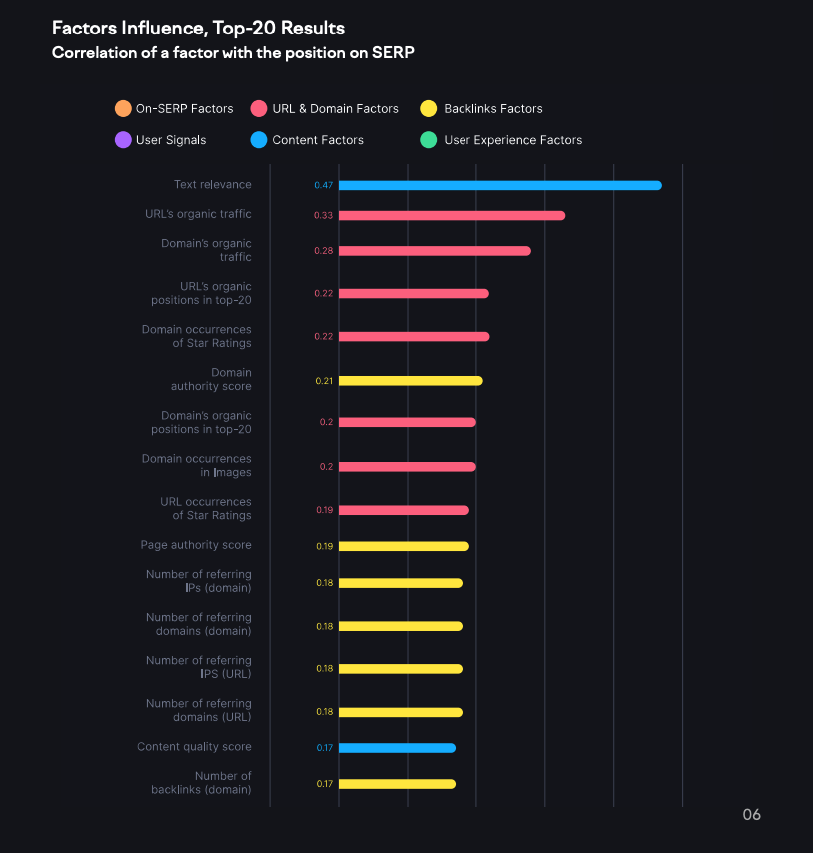
In the screenshot below, you can see that organic traffic and rank are the 2nd and 3rd most highly correlated, with correlations of 0.33 and 0.28, respectively.
The pure link-related metrics are located, which are still positively correlated with ranking, but to a lesser extent, at 0.18.
One of the other things SEOs typically look to improve with link building is website authority, so let’s look at that next.
2. Backlinko – We Analyzed 11.8 Million Google Search Results – Here’s What We Learned About SEO
Takeaway: Higher domain rating still correlates with higher rankings
In another study conducted by Backlinko in April 2025, they found that Domain Rating (DR), Ahref’s proprietary authority metric, correlates with higher first page Google rankings:
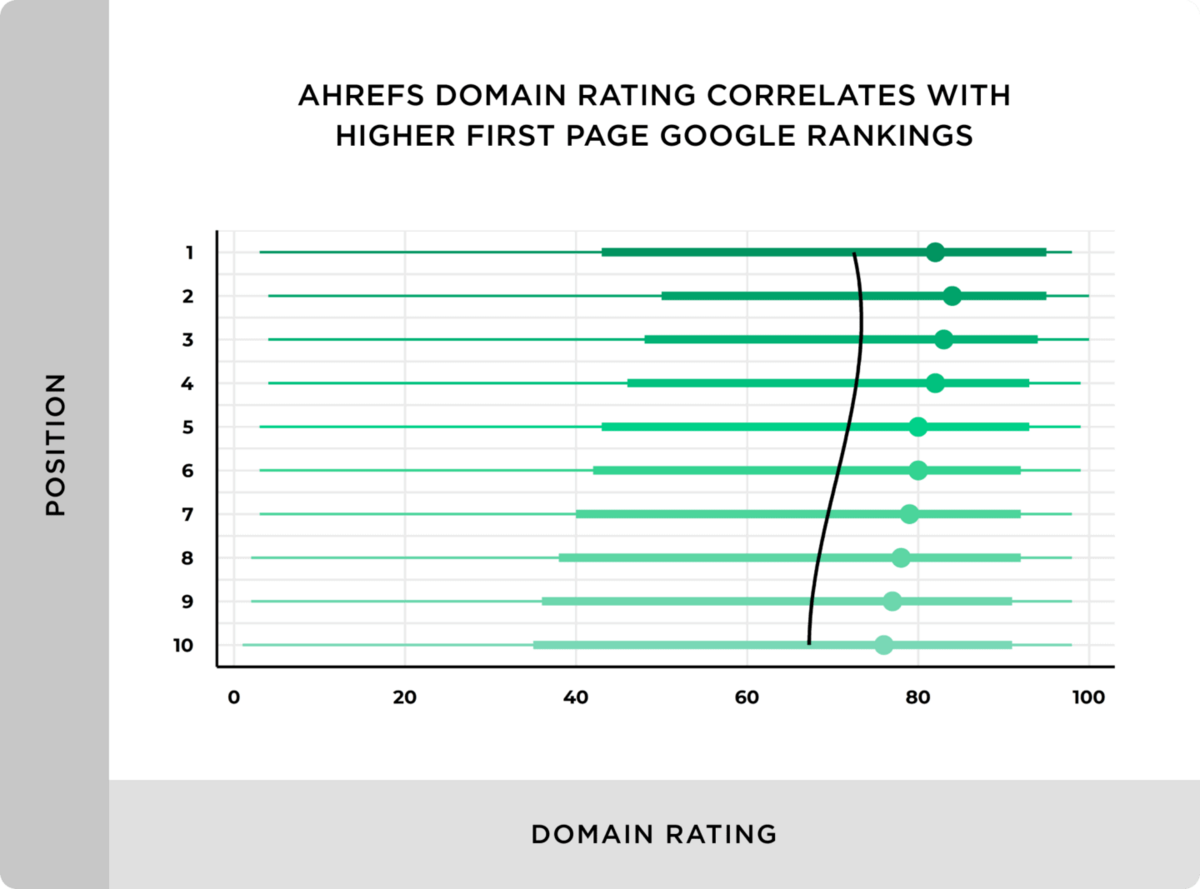
As you can see below, the trend continues for SERP position:
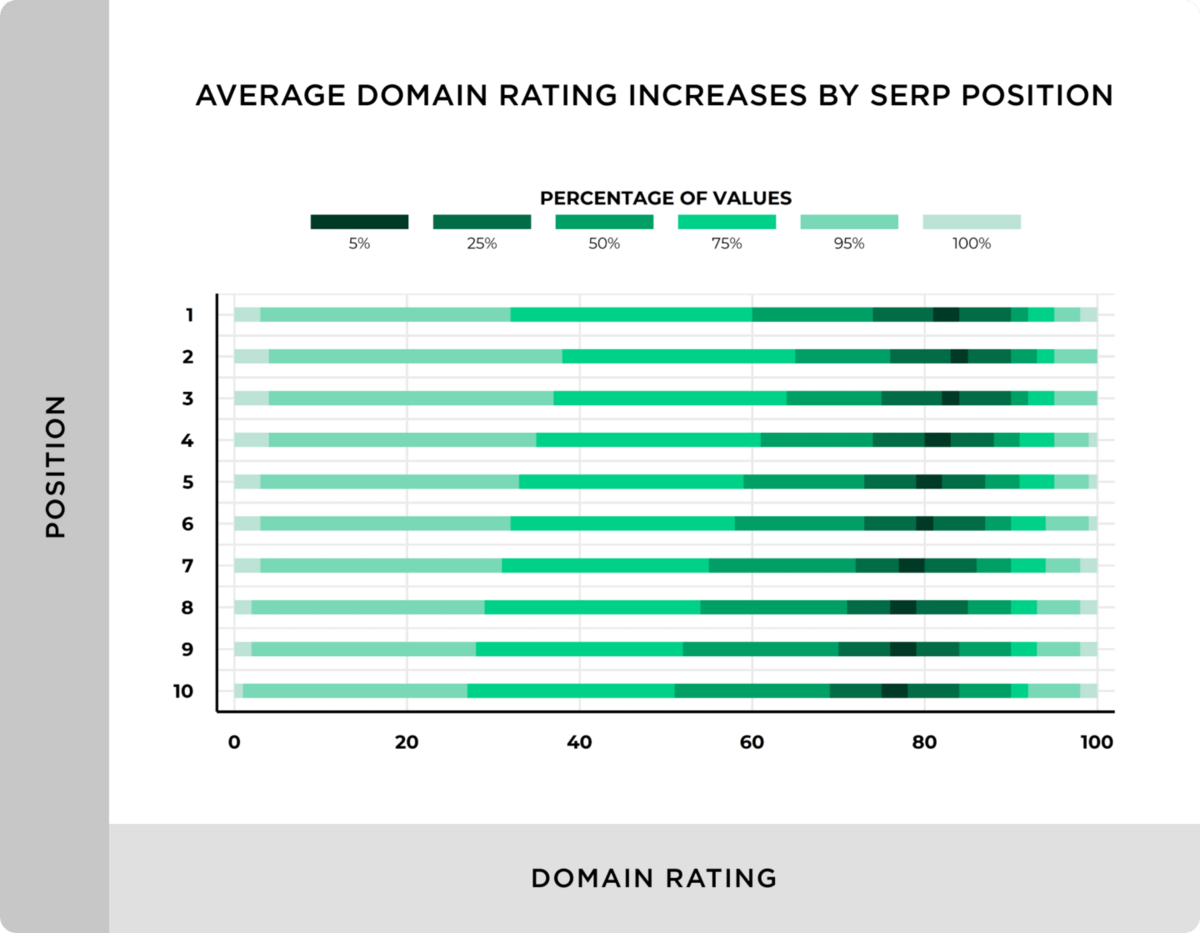
Digital PR and Links
At this point, it’s becoming clear to me that raw link numbers are not what you should be looking for. Link building should be utilized to enhance rankings and increase traffic.
And looking at it from that lens the impact of link building —especially digital PR— is very much alive,
Campaigns generate exactly the kind of authoritative, editorial links that studies like this show are most likely to improve rankings.
But let’s face it, most people don’t care as much about organic traffic anymore. The hot topic is AI.
So, let’s see if links still matter for AI.
Where Link Building Matters in AI (Backed by Empirical Research)
If you ascribe to the thought process that links help rankings, then you’ll be pretty excited to learn that brand visibility in AI Overviews still maintains high correlations with rankings.
I found three studies that demonstrate the impact of ranking on visibility in AI Overviews.
1. SERanking – The State of AI Overviews in 2024: Research Insights and Future Forecasts
Takeaway: 92% of AI Overview citations include at least one top-10 ranking page.
SERanking published an exhaustive analysis at the end of 2024 on AI Overviews, which found that in over 92% of cases, the sources cited in an AI overview included at least one of the top-10 organic search results for that query.
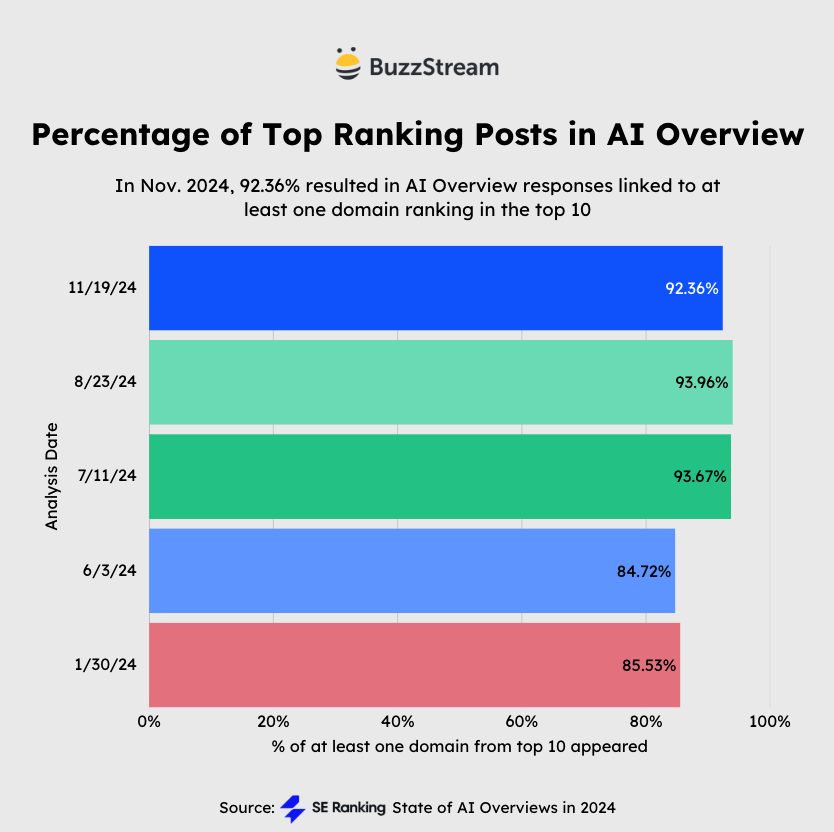
This was based on an analysis of a mix of 18,767 keywords that triggered AIOs. As you can see, it has generally been increasing over time.
2. Ahrefs – Does Ranking Higher on Google Mean You’ll Get Cited in AI Overviews?
Takeaway: ~50% of the #1 rankings overlap with AI citations.
Furthermore, Ahrefs also published a study in July that found a correlation of 0.347 between ranking in the top 10 and being cited in the top 3 AI Overview results.
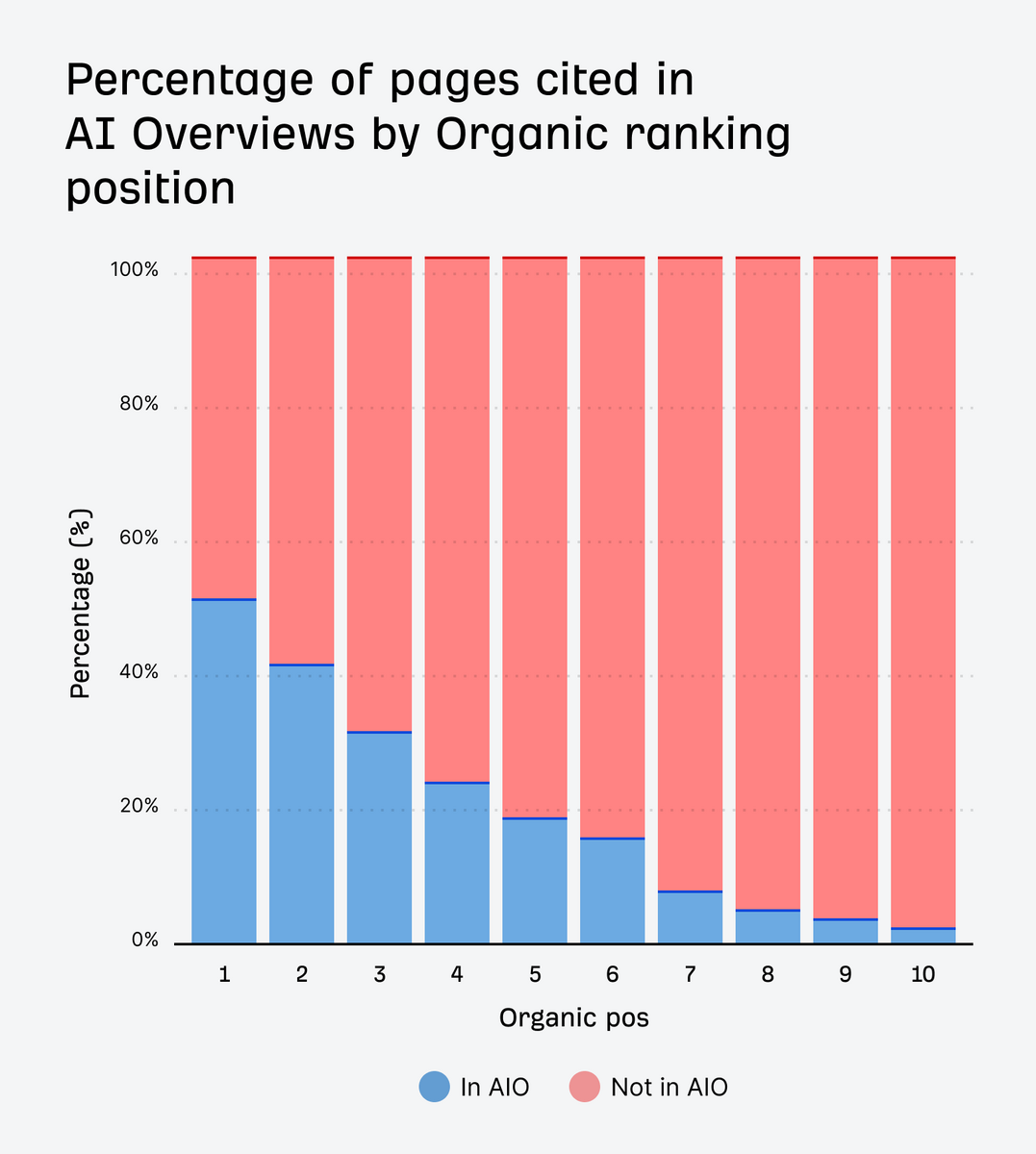
When you look at the graph below, you can see that about 50% of the number one ranking pages overlap with AI Overview citations.
After that, they drop down pretty steadily.
You can see this same trend play out in ZipTie’s study as well.
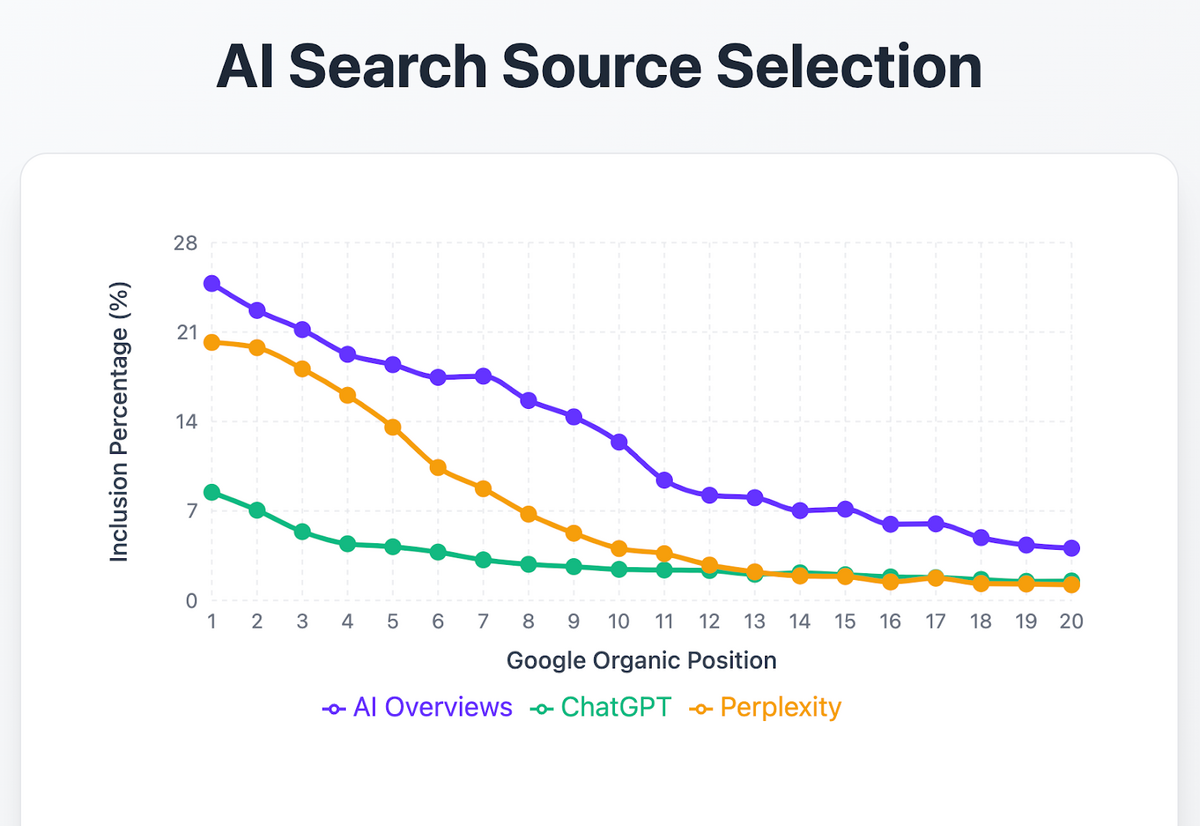
As you can see, ChatGPT is the only one that doesn’t correlate as highly, which we’ll discuss later.
3. Ahrefs – 76% of AI Overview Citations Pull From Top 10 Pages
Takeaway: 76% of AI Overview Citations overlap with Top 10 ranking results
In yet another Ahrefs study of 1.9 million AI Overview citations from July 2025, they found that 76.10% of the citations rank in the top 10 of the Google SERP.
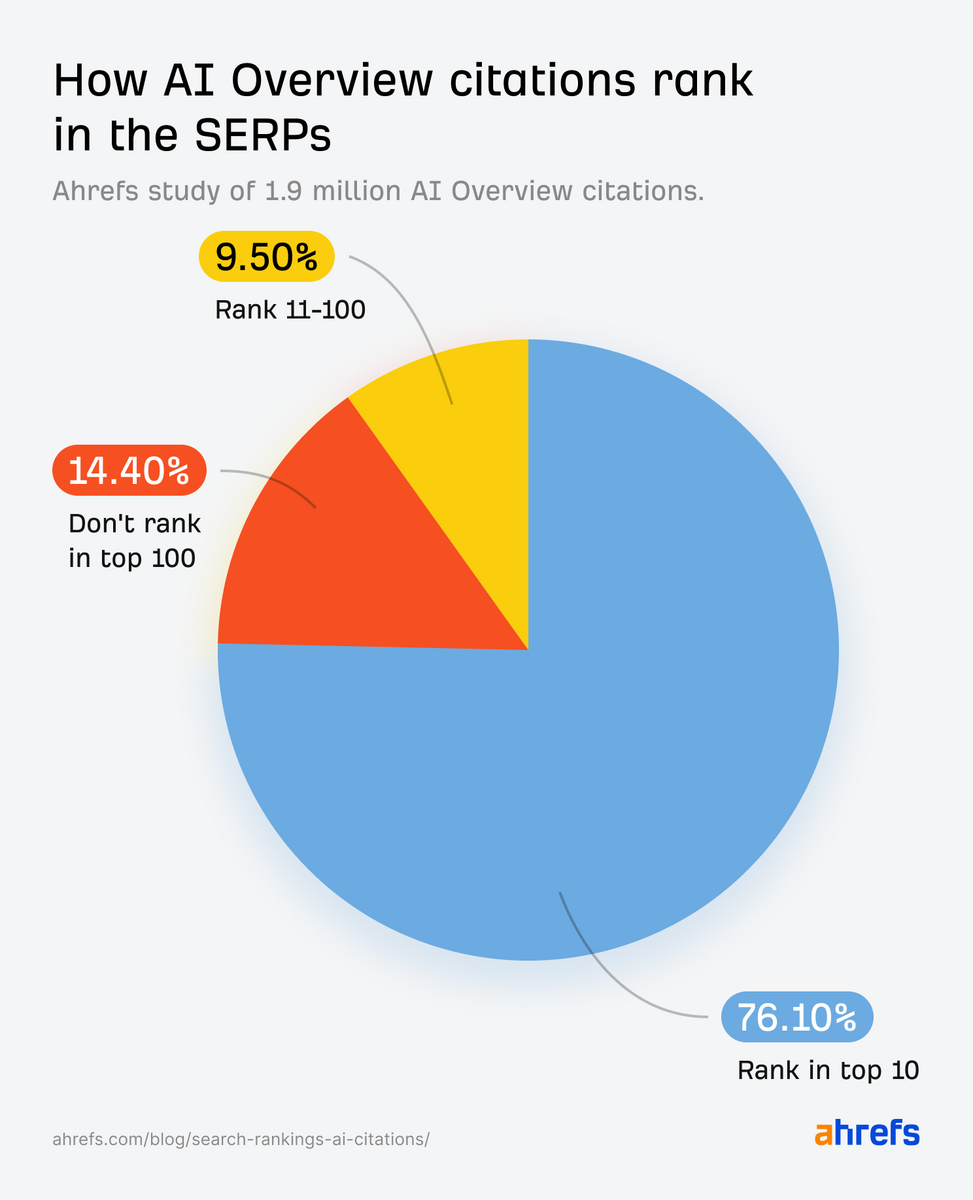
The other minor takeaway is that
4. SurferSEO – AI Search Study: Sources in Google AI Overviews
Takeaway: 65% of AI answers come from positions 1-10.
SurferSEO conducted a study in July 2025, which also found that 65% of the sources used in the answer (or in the fan-out query) originate from positions 1-10.
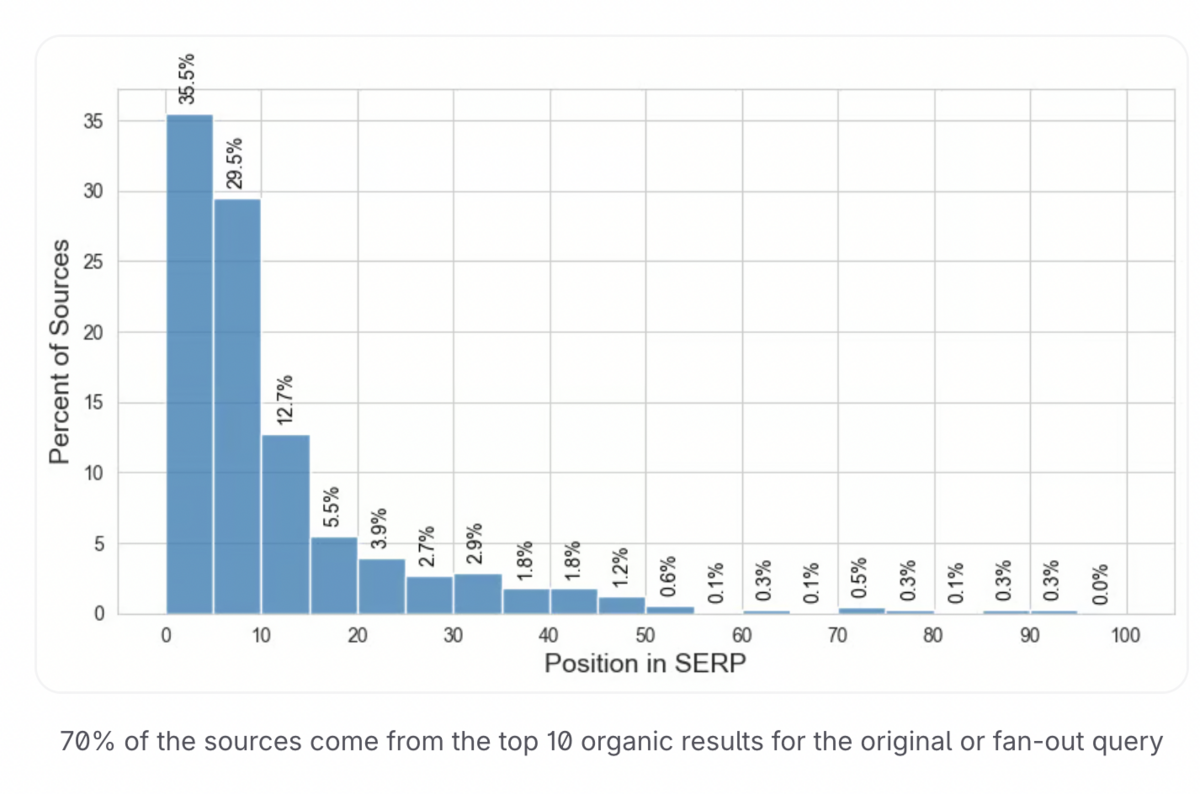
However, there’s a lot more to the sources than meets the eye.
SurferSEO provided a more detailed breakdown of how AI Overviews has two kinds of sources they show, described in the article like this:
- Core Sources: frequently reused URLs that appear across multiple responses for the same query.
- Non-Core Sources: These appear only once and often don’t recur.
The reasoning behind Google’s doing this is a bit unclear to me (and to SurferSEO), but overall, the core sources have a significantly higher average rank.
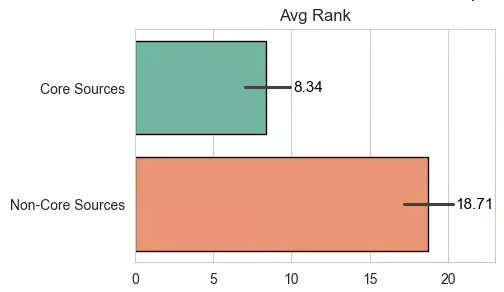
They also have a higher Domain Authority.
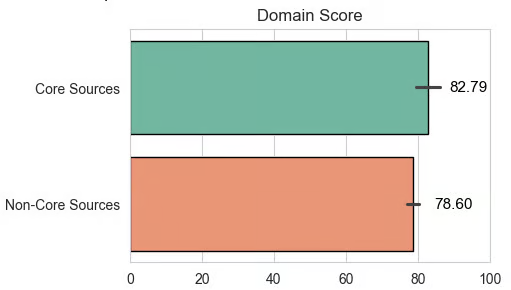
In both cases, for each type of source, the average authority score of the sources is in the high 80s, and the average rank of the sources is in the top 20, which is consistent with what we’ve seen so far.
At this point, we’ve only looked at AI Overviews, given that’s where most of these studies are happening (it’s also the most used).
Next is one I found regarding ChatGPT.
5. Seer Interactive – STUDY: What Drives Brand Mentions in AI Answers?
Takeaway: Ranking in finance and SaaS industries correlates strongly with ChatGPT mentions, but weakly with backlinks.
Seer Interactive’s study in January 2025, based on over 300,000 keywords in finance and SaaS, found that brands ranking on the first page of Google showed a strong correlation (~0.65) with ChatGPT mentions.
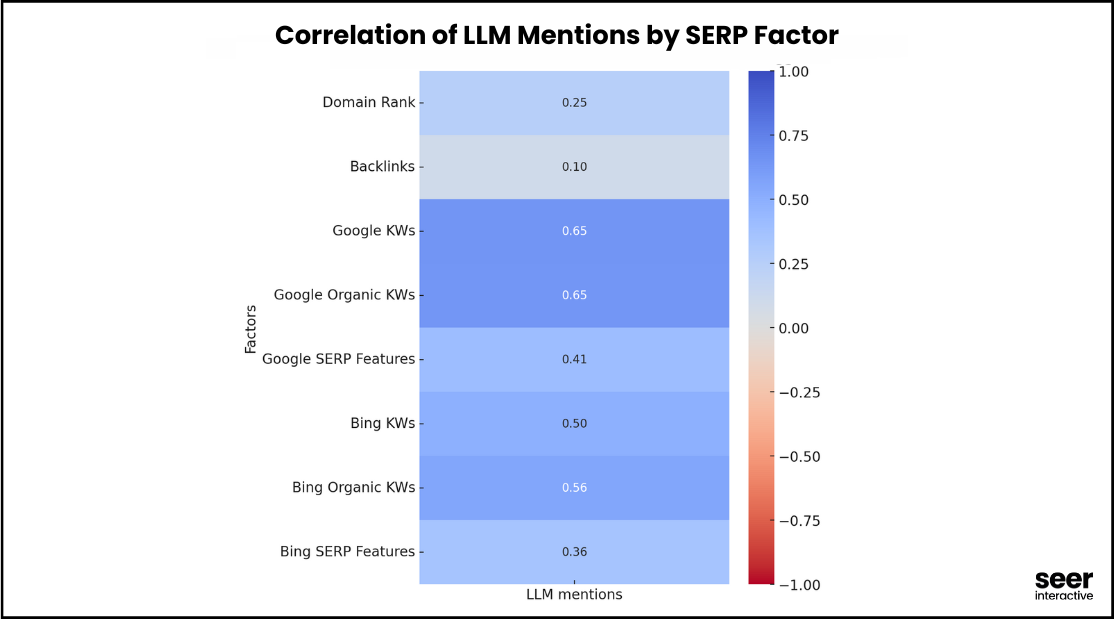
However, the correlation between the number of backlinks and the number of citations is only 0.10, which is very weak.
Nick Haigler, Sr. Manager, SEO with Seer Interactive told me:
“In our study, backlinks didn’t play a big role in visibility within ChatGPT. But staying visible across the search landscape is still critical – whether that’s ranking for your brand on Google or being mentioned by credible, authoritative sources that LLMs commonly pull from.”
Digital PR and AI
Since digital PR often secures links and mentions from high-authority regularly updated sites, particularly news sites, it aligns well with the kinds of sources Google and other AI systems tend to favor.
Even when the direct link benefit is unclear, the brand visibility gained from digital PR placements increases your chances of being cited in AI-generated results.
Where Link Building Matters Less in AI (Backed by Empirical Research)
As I mentioned, most people seem to be concerned about AI and its impact on link building these days.
Currently, there isn’t a significant amount of direct evidence that pure link numbers affect AI.
In some studies, traditional metrics such as rankings and organic traffic aren’t as strongly correlated with AI visibility.
AI Doesn’t Work the Same Way Google Search Does
AI models like Gemini or ChatGPT are large language models (LLMs). They are trained on a massive amount of text from the internet, books, forums, and other sources that aren’t updated in real time.
When you ask it a question, the model doesn’t “search” the web like Google does unless you ask it to. Instead, it predicts the most probable response based on the words you’ve given it.
(This is why you sometimes get hallucinations.)
We still don’t know what makes up the text used to train these LLMs, though some guesses have been made based on older scraped web data.
However, some AI systems, like Google’s AI Overviews, Bing Chat, or ChatGPT with browsing enabled, layer something called Retrieval Augmented Generation (RAG) on top of the LLM.
RAG turns your query into a format it can compare (called embeddings) and then retrieves fresh information to help generate a more accurate answer.
Let’s look at three studies that show that link building may not be as impactful for showing up in AI:
1. Ahrefs – An Analysis of AI Overview Brand Visibility Factors (75K Brands Studied)
Takeaway: Brand Mentions Correlate More Than Links in AI Overviews
Another study from Ahrefs, which analyzed 75,000 brands, found that unlinked brand mentions have the highest correlation with branded web mentions (0.664) vs just 0.326 with DR, 0.295 with referring domains, and just 0.218 with raw backlinks.
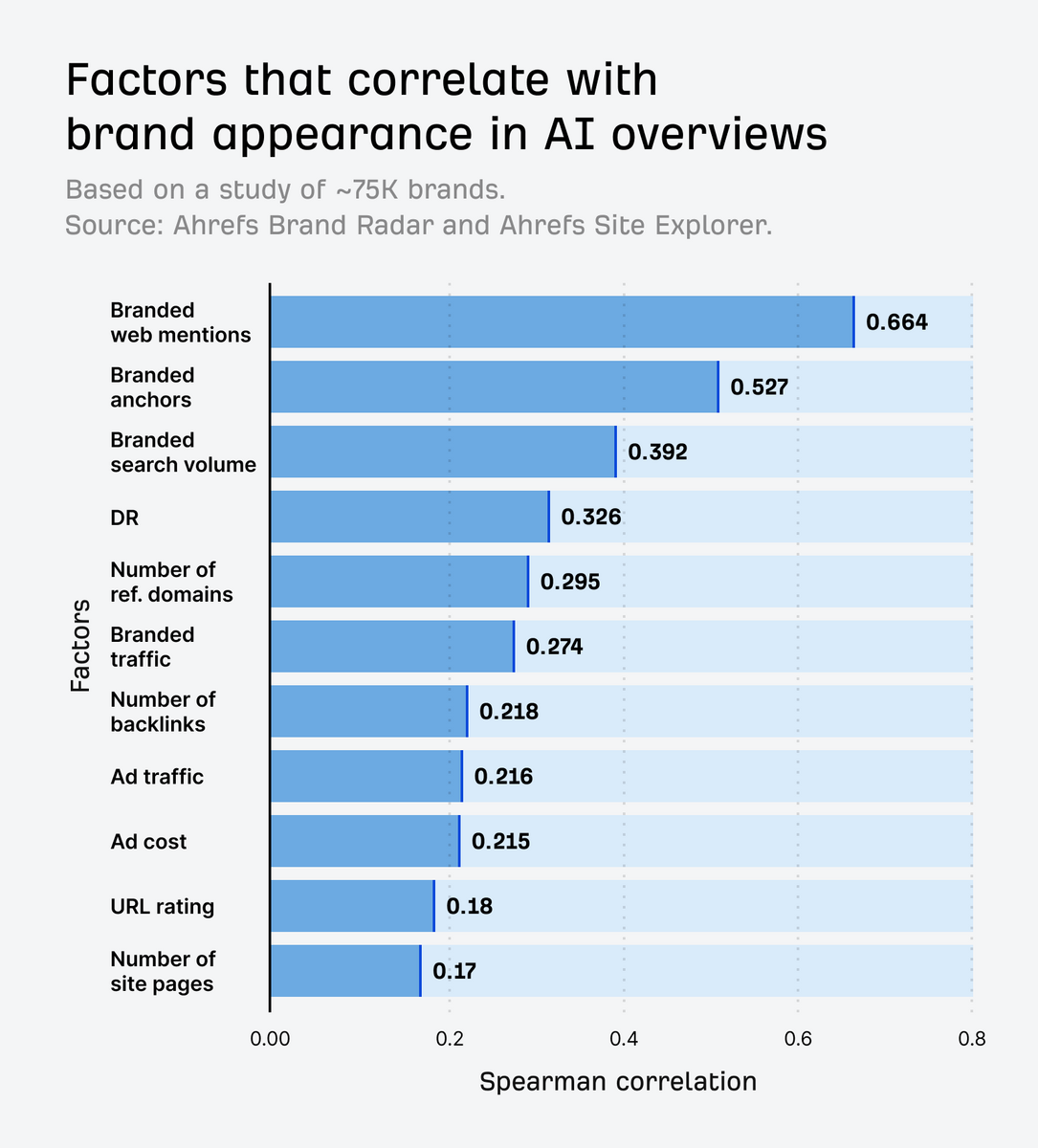
This analysis suggests that a brand’s strength has a significant impact on exposure in AI Overviews. The brands in the top 25% of web mentions averaged 10 times more than the other brands in the 50-75% range.
Here, I would like to argue that while traditional link building may not be applicable in this context, digital PR is invaluable.
Although many group the term “digital PR” into link building, I think that digital PR is starting to break off into its own thing.
One of the biggest struggles of digital PR has been getting unlinked brand mentions. Getting journalists to change them is sometimes downright impossible because they have no control.
With AI, getting unlinked mentions may even prove to be a strength.
I would still always aim for a link, but if you don’t get one, it’s not the end of the world.
2. Ahrefs – Only 12% of AI Cited URLs Rank in Google’s Top 10 for the Original Prompt
Takeaways: There is minimal overlap between Google search results and ChatGPT/Gemini/Copilot citations
In yet another Ahrefs study, they found that there is minimal overlap in Google Search results and ChatGPT, Gemini, and Copilot.
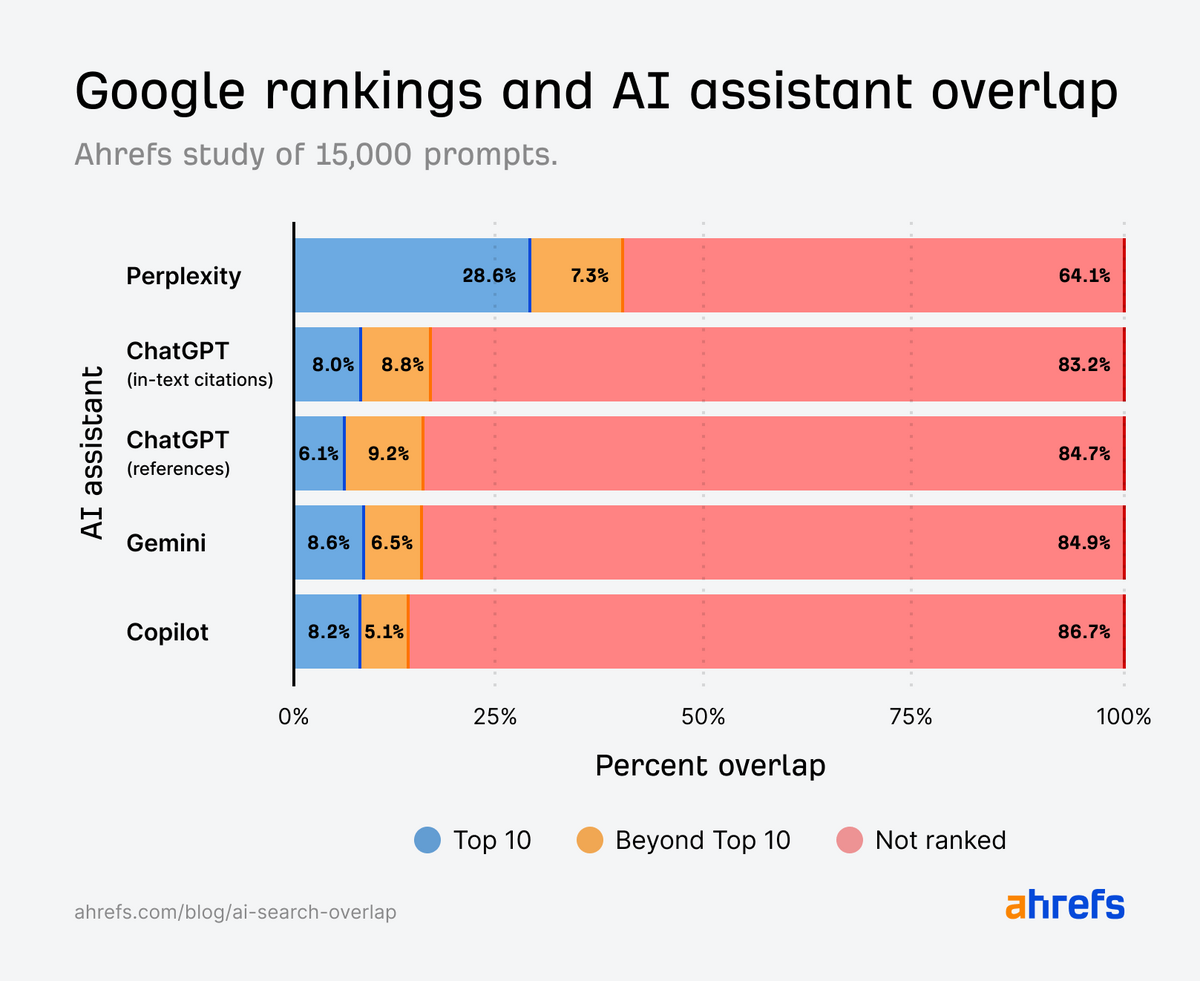
You can see by the chart that Perplexity has the most substantial overlap.
3. Authoritas – SERP Organic and AI Overview Volatility Research
Takeaway: AI Overviews Are Much More Volatile Than Organic SERPs
As the SurferSEO study explained, AI Overviews appear to pull “core sources” and “non-core sources”. A study by Authoritas reveals that AI Overviews are significantly more volatile than traditional rankings.
Here’s the key takeaway from their findings, which ranks volatility in two windows of time, with 1 being most volatile and zero the least:

This, for me, is the most concerning aspect of it all because it means you are trying to hit a moving target.
For SEOs tracking pure citations, you might show up one day and not a few weeks later.
4. Pew Research – Google users are less likely to click on links when an AI summary appears in the results
Takeaway: Users clicked on links in AI summaries just 1% of the time.
If you are relying on links in AI citations to drive direct traffic to your site, you’re going to be sorely disappointed.
We are in the era of zero-click search, meaning many visitors perform a Google search, get their answer, and leave without clicking on a result.
An eye-opening study from Pew Research showed that those who encountered an AI-generated summary clicked on links just 1% of the time.
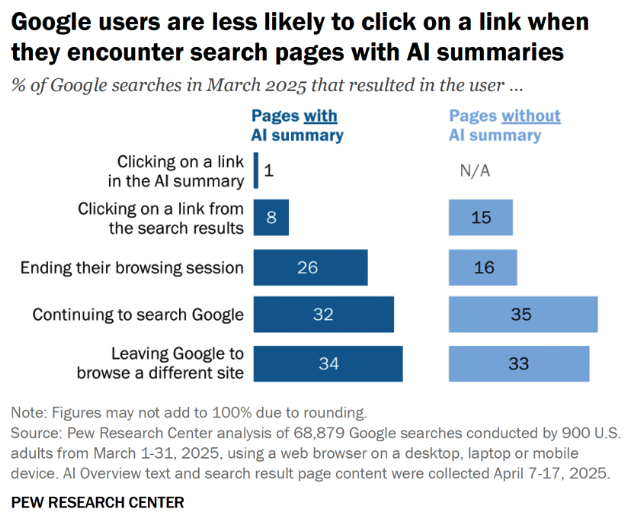
Google has all but confirmed this in their recent statement, saying that AI Overviews is actually driving more quality links, but fewer overall.
So, even if you show up in citations, it’s not guaranteed that you’re getting clicks.
Digital PR and Brand
There are definitely some parallels that still aren’t as clear, as evidenced with these studies.
However, digital PR earns unlinked brand mentions alongside links.
So, in the AI context, where unlinked mentions can be just as influential as links, brand presence can keep you visible even when link signals play a smaller role.
So…Is Link Building Dead?
No, but link building is different in 2025.
The data is clear: links still correlate with rankings, and rankings still influence AI.
However, the tactics that worked in 2015 won’t cut it anymore.
Digital PR is now becoming the primary link building method for brands, as evidenced by uSERP, Editorial.Link’s State of Link Building, and FatJoe’s Future of Link Building.
The evolution of link building, which can impact both search and AI-driven environments, seems like a solid play for now.

 End-to-end outreach workflow
End-to-end outreach workflow



 Check out the BuzzStream Podcast
Check out the BuzzStream Podcast







